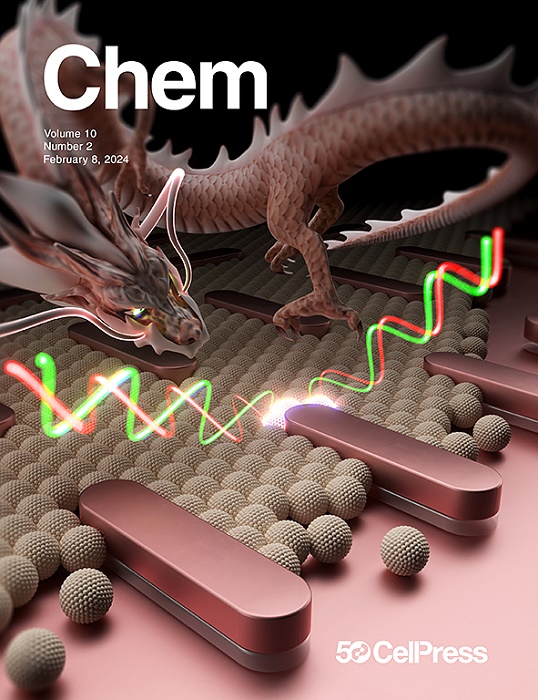单电子转移引发的喹啉二聚化及其骨架重排为吲哚的过程
IF 19.1
1区 化学
Q1 CHEMISTRY, MULTIDISCIPLINARY
引用次数: 0
摘要
二维平面芳香原料的脱芳烃化是一种极具吸引力的策略,可将三维载体引入化学支架,从而拓展药物发现的化学空间。在这里,我们展示了在多硫阴离子光催化作用下,喹啉的脱芳烃二聚化和骨架重排,其中添加剂决定了反应过程。在有甲酸盐存在的情况下,喹啉的脱芳香二聚化反应之后会发生环化反应,以净还原的方式形成富含 sp3 的 2,5-甲基苯并[b]氮杂卓和四氢喹啉的多杂环。另一方面,在有三乙胺而不是甲酸盐的情况下,会发生连续的二聚化和骨架重排,从而以氧化还原中性的方式生成 4-(3-吲哚甲基)喹啉。根据这些观察结果,设计出了一种将 4-芳基喹啉类化合物净还原为 3-(芳基甲基)吲哚类化合物的骨架重排方法。详细的机理研究发现,这种从电子缺乏的喹啉到电子丰富的吲哚的骤变是通过 1,2-芳基迁移/环收缩序列介导的,而不是通常所说的新芳基样重排。本文章由计算机程序翻译,如有差异,请以英文原文为准。

Dearomative dimerization of quinolines and their skeletal rearrangement to indoles triggered by single-electron transfer
Dearomatization of two-dimensional planar aromatic feedstocks is an attractive strategy for the introduction of three-dimensional vectors into chemical scaffolds to expand chemical space for drug discovery. Here, we demonstrate the dearomative dimerization and skeletal rearrangement of quinolines under polysulfide anion photocatalysis, in which the additive dictates the reaction courses. In the presence of formate, dearomative dimerization of quinolines is followed by cyclization to form an sp3-rich polyheterocyclic hybrid of a 2,5-methanobenzo[b]azepine and a tetrahydroquinoline in a net-reductive manner. On the other hand, in the presence of triethylamine instead of formate, sequential dimerization and skeletal rearrangement occurs to afford 4-(3-indolylmethyl)quinolines in a redox-neutral manner. These observations enabled the design of a net-reductive skeletal rearrangement of 4-arylquinolines to 3-(arylmethyl)indoles. Detailed mechanistic investigations revealed that this umpolung transformation from electron-deficient quinolines to electron-rich indoles is mediated via a 1,2-aryl migration/ring-contraction sequence, as opposed to the more commonly invoked neophyl-like rearrangement.
求助全文
通过发布文献求助,成功后即可免费获取论文全文。
去求助
来源期刊

Chem
Environmental Science-Environmental Chemistry
CiteScore
32.40
自引率
1.30%
发文量
281
期刊介绍:
Chem, affiliated with Cell as its sister journal, serves as a platform for groundbreaking research and illustrates how fundamental inquiries in chemistry and its related fields can contribute to addressing future global challenges. It was established in 2016, and is currently edited by Robert Eagling.
 求助内容:
求助内容: 应助结果提醒方式:
应助结果提醒方式:


